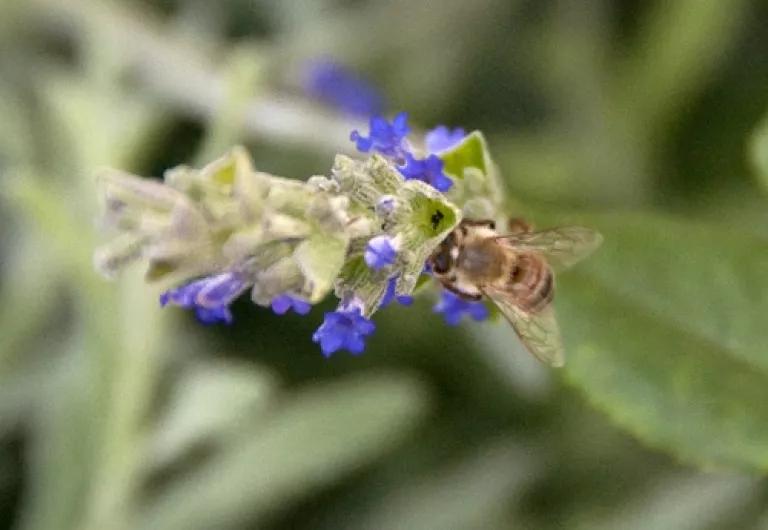
Chlorpyrifos is a pesticide that can interfere with the normal brain development of fetuses, infants and children, leading to lasting neurological effects (see general fact sheet here). For this reason, it has been banned from almost all household uses since 2001.But, it is still approved for agriculture, with more than 1.45
million pounds used in California in 2010.
At right: Wine grapes in California, which some growers treat with chlorpyrifos. (Photo credit: Rego Sen)
The California Environmental Protection Agency (CalEPA) should take action on this toxic pesticide now to protect our families and environment because:
- Chlorpyrifos may contribute to learning problems in California children
- There is widespread chlorpyrifos contamination of California’s environment and people
- California’s workers are at risk from harmful chlorpyrifos exposures
- US EPA’s assessment will not adequately protect vulnerable Californians
- New research on harm to kids and wildlife needs consideration
- Alternatives to chlorpyrifos are already in use in California, and could replace the remaining uses of this harmful and unnecessary pesticide
In response to years of inaction, over seventy groups including NRDC presented the evidence around these points in a recent letter to CalEPA.
Chlorpyrifos may contribute to learning problems in California children
Evidence that chlorpyrifos causes serious neurological harm to children compelled US EPA to phase out indoor uses in 2001; since that time, many more studies reaching the same conclusion have been published. Of particular relevance are studies on pregnant moms and their kids in an agricultural region in California, reporting that pesticide exposures during pregnancy were associated with IQ reductions up to 7 points (Bouchard et al 2011) or attention problems (Marks et al 2010) in children.
Widespread chlorpyrifos contamination of California’s environment and people
Monitoring data show frequent chlorpyrifos detections in air and broad water contamination in agricultural areas of California. Chlorpyrifos was present in 80% of water samples from the Santa Maria Valley, at levels in over half the samples that exceeded US EPA’s recommendation to protect aquatic life.
Testing of people in California through the state’s landmark biomonitoring program indicates that exposure to chlorpyrifos is nearly ubiquitous. A chlorpyrifos breakdown product is present in 82% of Californians tested—these studies included pregnant women in San Francisco and firefighters in Southern California.
California’s workers are at risk from chlorpyrifos
Agricultural workers, their families, and other people living in agricultural areas have increased risk of exposure and harm from chlorpyrifos. In a 2011 Assessment, EPA evaluated 350 agricultural use scenarios and estimated that in over half, workers would not be adequately protected from exposures exceeding the level of concern, even with some personal protective equipment. Chlorpyrifos is the #5 pesticide causing acute poisoning in workers (Calvert 2008), and was associated with 360 cases of pesticide-related illness in California from 2000-10.
Anyone in the vicinity of chlorpyrifos use could also be at risk. When US EPA modeled pesticide drift from real air monitoring data, they estimated that bystander exposures exceeded the level of concern for some applications.
US EPA’s assessment will not adequately protect vulnerable Californians
In substantive scientific and legal comments on US EPA’s assessment, NRDC identified problems that make it unsuitable as the sole source of information for California’s assessment. US EPA’s assessment did not adequately account for the vulnerability of infants and children and their recommendations will not effectively protect children in California. Furthermore, California employs about a third of the nation’s agricultural workers and contains unique ecosystems and sensitive species, all of which need special protection.
California EPA needs to consider new research on harm to kids and wildlife
Scientific studies published since 2011, the year of US EPA’s most recent assessment, contain additional evidence of how chlorpyrifos can harm children and vulnerable ecosystems. A study of moms and their babies found that newborns are less able to transform chlorpyrifos’ toxic forms into safer products in their bodies, making them even more sensitive to its damaging effects (Huen et al 2012). Another study found that young children had higher levels of chlorpyrifos breakdown products in their urine during the time of pesticide application or if they lived close to an agricultural field (Bradman et al 2011). This suggests that drift may be an important way that kids in agricultural communities come into contact with this pesticide.

Chlorpyrifos is also harmful to beneficial insects and other wildlife. Bees, critical pollinators for California’s crops, are already suffering assaults from many other sources.
At left: A bee on a flower. Bees are required to pollinate crops like almonds. (Photo credit: Rego Sen)
Scientists collected pollen from bees returning to hives and frequently found chlorpyrifos at levels which raise concern for toxicity to worker bees (Stoner et al 2013). A recent study found that chlorpyrifos in agricultural run-off water was toxic to the food source of the federally-listed threatened delta smelt fish (Weston et al 2014).
Alternatives to chlorpyrifos are already in use in California
So if chlorpyrifos is this nasty, are there any viable alternatives, and do we know if they are safer? Data from California’s Pesticide Use Reporting Program suggests that alternatives are readily available: in 2010, for the leading uses of chlorpyrifos on almonds, alfalfa, walnuts, oranges, cotton, grapes, and broccoli, over half of all growers of each crop weren’t using chlorpyrifos. CalEPA should work with growers and Integrated Pest Management programs to evaluate these alternatives and promote strategies that reduce the use of toxic pesticides like chlorpyrifos.
California EPA should take action on chlorpyrifos
California families and our unique ecosystems deserve swift protection from chlorpyrifos. CalEPA has the opportunity to act now because they are in the process of re-evaluating chlorpyrifos uses in the state.
- Restrict chlorpyrifos uses now, with cancellation as the ultimate goal
- Phase out aerial and air blast applications
- Resume their own risk assessment process
- Work with the University of California Integrated Pest Management program on finding non-chemical and reduced risk alternatives to chlorpyrifos
